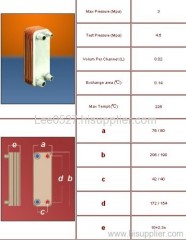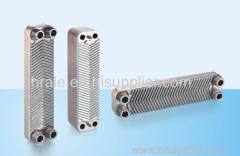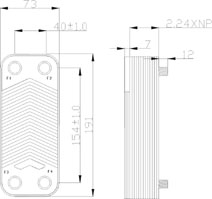
Brazed plate heat exchanger
1.0~100000.0 USD
| Min. Order: | 1 Piece/Pieces |
|---|---|
| Trade Term: | FOB |
| Payment Terms: | L/C, T/T |
| Supply Ability: | 20000 |
Company Profile
| Location: | China (Mainland) |
|---|---|
| Business Type: | Manufacturer, Trading Company, Agent, Distributor/Wholesaler, Service |
Product Detail
| Model No.: | BL14 |
|---|---|
| Means of Transport: | Ocean |
| plate heat exchanger: | brazed plate heat exchanger |
| gasket plate heat exchanger: | heat exchanger |
| Production Capacity: | 20000 |
| Packing: | wood case |
| Delivery Date: | 10days |
Product Description
Brazed Plate Heat Exchanger Features
Flow principle
The basic flow principle in a brazed heat exchanger for HVAC applications is parallel and current flow to achieve the most efficient heat transfer process. In a single pass design all connections are located on one side of the heat exchanger, making installation very easy.
Evaporator flow principle
The channels formed between the corrugated plates and corners are arranged so that two media flow through alternate channels, always in opposite directions. The two phase refrigerant (vapor + liquid) enter the bottom left with a vapor quality depending on the working condition of the factory .
Evaporation of the liquid phase takes place inside the channels and some degrees of superheat are always requested, which is the reason why the process is called "dry expansion". In the enclosed evaporator picture the dark and light blue arrows show the location of the refrigerant connections. The water (brine) to be cooled flows counter in the opposite channel; the dark and light red arrows show the location of the water (brine) connections.
Condenser flow principle
The main components are the same as for the evaporator. The refrigerant enters at top left of the exchanger as hot gas and starts to condense on the surface of the channels until fully condensed, and is then slightly subcooled. The process is called "free condensation". In the enclosed condenser picture the light and dark blue arrows show the location of the brine connections. The refrigerant flows counter current in the opposite channel and is cooled. The light and dark red arrows indicate the locations of the refrigerant connections.



.gif)




